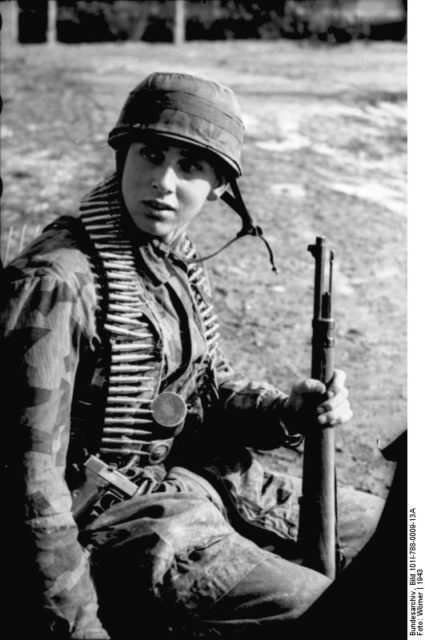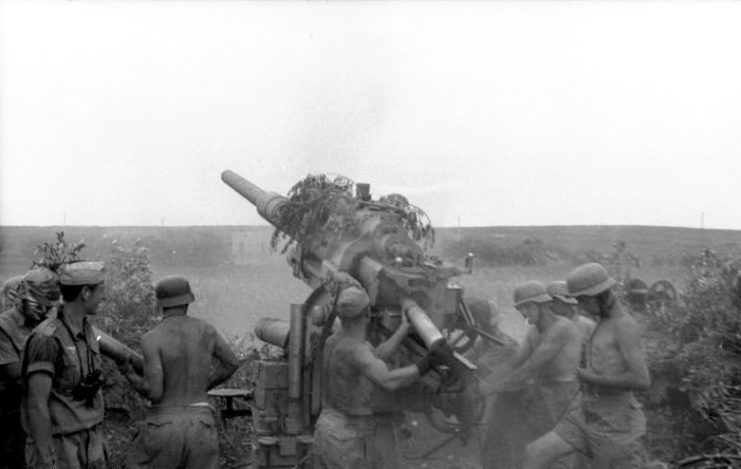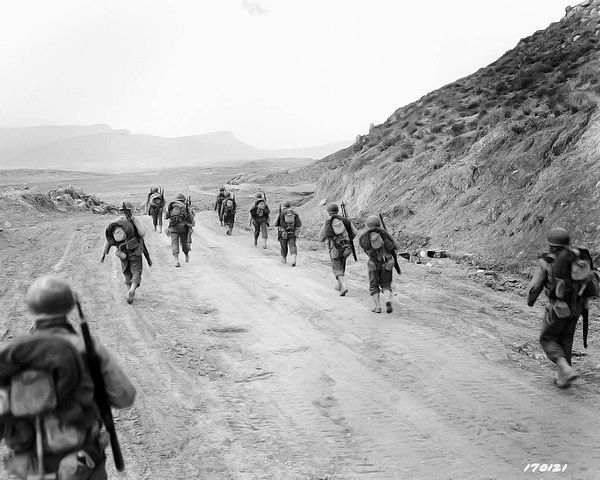On February 15, 1943, 230 American soldiers achieved a remarkable escape. Trapped behind German forces during fierce fighting in North Africa, they walked through the enemy lines to safety.
Caught Out in the Desert
In February 1943 Tunisia was the site of some of the fiercest fighting in the war that was consuming half the world. American and British forces, with support from other Allied countries, were fighting to drive the Axis powers out of North Africa. The Germans and Italians, who had expanded their power in the region when France fell, were clinging on with bitter tenacity.
On February 14, the Allies received an unpleasant surprise. The Germans launched an attack on the Faid Pass and the tiny village of Side Bou Zid.
It was not normally a remarkable part of the world. An obscure settlement in the vast expanse of the desert, Side Bou Zid became significant by an accident of geography. It was positioned on one of the routes the Allied forces in the west and Axis forces in the east could use to pass through the hills and attack each other.
The attack on February 14 was a significant German advance. Sitting high on the slopes of a mountain named Djebel Lessouda, Major Bob Moore, the commander of an infantry battalion from the 168th Regiment, watched Axis tanks overrun Allied artillery and infantry below. As more German troops advanced, he struggled to tell friend from foe. At times when they could reliably tell the difference, his men used mortars to attack German troops passing beneath them. For the most part, they sat tight and held off German attacks against them.
The Thwarted Rescue
By the end of the day, it was evident Moore’s troops, along with several other groups, had been cut off by the German advance. The next day, an armored battalion of 52 tanks under Lieutenant Colonel J. D. Alger was sent to rescue them. Alger’s formation advanced across what looked like flat ground. Alger, however, had learned the dangers of the region by then. Ravines supplied cover that could provide the perfect hiding place for an ambush.

As German planes strafed and bombed the Americans, Alger’s tanks pulled down the hatches on their vehicles and kept moving. Then, sure enough, they were ambushed. A tank battle broke out. The Americans suffered heavy losses. Alger’s tank was hit several times, and he was forced to abandon it. He was taken prisoner. By late afternoon, the last of the American tanks were surrounded and destroyed. Things looked bleak for Moore and his beleaguered troops.
An Order and a Plan
As dusk fell and smoke billowed from the wrecks of the rescue party, a P-40 fighter plane buzzed low over Djebel Lessouda. The pilot dropped a message carrying orders for Moore. Starting at ten that night, he was to withdraw from his position, bringing all the equipment he could. It was easier said than done. A German officer among the prisoners they held told them there were forces all around their position.

Moore decided that, with hundreds of men involved, trying to sneak past the Germans would never work. Instead, they would march through the desert in double file, hoping to get past any German guards before anyone realized who they were. They would take their wounded and their prisoners, who were warned they would be bayonetted if they tried to give the game away.
The soldiers disabled their vehicles and buried the weapons they could not take with them.
At 10:30 pm they set out west, down the heights.
Walking Away
It was a tense march through the darkness. At the western edge of the mountain, they passed a German 88mm gun. One of the crew spoke to them, but they ignored him and kept walking. He must have assumed that they were on his side, as no alarm was raised. The American troops marched off the mountain and continued walking west.
Meeting the Wrong Men
Eventually, they reached a critical point where they were to meet other American soldiers, who were to provide them with cover for their withdrawal from the area. As they approached, the sound of voices emerged from a clump of trees.
Relieved, Moore walked toward the trees to meet their support. Another soldier came to meet him. When they came within 30 yards of each other, the man spoke. His words were in German. It was not the relief force. It was the enemy. Moore turned and walked back toward his men, who were 100 yards away. Boldly ignoring the Germans had worked before, maybe it would work again. However, the German officer was not so easily deceived. He called out and again received no answer.
Seeing that something suspicious was going on, the Germans opened fire. Machine guns and mortars hit the American column. Moore gave his men an order – scatter and run like hell.
Safe at Last
As the Germans kept firing, a few Americans were hit or surrendered. Most kept running. They spread out into the darkness, depriving the Germans of their gathered targets. Alone or in small groups, they continued west through the desert. Most of Moore’s column managed to escape their close encounter. Around five in the morning of February 16, they met guides who had been sent to lead them safely to friendly lines.
Moore’s plan worked. Of the men from Djebel Lessouda, 230 got safely back to join Allied forces. As the day passed, a few more made their way in, having scattered in the desert when they were attacked. They had been forced to give up their position, but through boldness, they had made it out alive.
Source:
Orr Kelly (2002), Meeting the Fox: The Allied Invasion of Africa, from Operation Torch to Kasserine Pass to Victory in Tunisia
